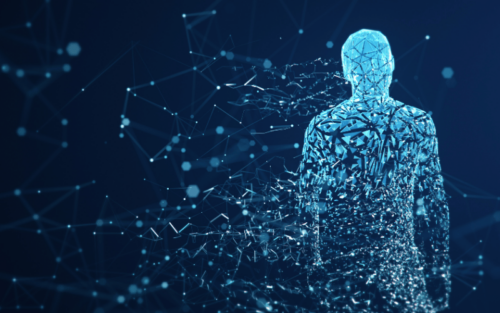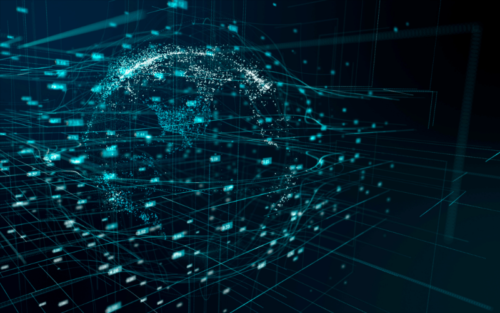Cybersecurity 101 Categories
What is MXDR?
MXDR stands for Managed Extended Detection and Response. It is an advanced cybersecurity service integrating multiple security tools and services to provide comprehensive threat detection, investigation, response, and remediation. MXDR combines capabilities such as threat intelligence, behavioral analysis, and machine learning to enhance the detection and response to complex and sophisticated cyber threats.
Key features of MXDR include:
- 24/7 Monitoring: Continuous monitoring of networks, endpoints, and cloud environments to identify and respond to threats in real-time.
- Advanced Threat Detection: Utilizes machine learning, artificial intelligence, and threat intelligence to detect known and unknown threats.
- Incident Response: Provides a structured approach to responding to security incidents, including containment, eradication, and recovery.
- Threat Hunting: Proactively searches for indicators of compromise and potential threats within an organization’s environment.
- Security Orchestration, Automation, and Response (SOAR): Automates repetitive tasks and orchestrates complex workflows to improve response times and efficiency.
- Expert Analysis: Involves cybersecurity experts who analyze threats, provide insights, and recommend actions to mitigate risks.
- Comprehensive Reporting: Delivers detailed reports on security events, incidents, and the overall security posture of the organization.
MXDR services are typically offered by managed security service providers (MSSPs) and are designed to help organizations improve their security posture without the need for significant in-house resources or expertise.
What specific security challenges does MXDR address?
Managed Extended Detection and Response (MXDR) services address a variety of specific security challenges faced by organizations. Here are some of the key challenges that MXDR helps to mitigate:
- Advanced Threat Detection
– Challenge: Detecting sophisticated and stealthy cyber threats that bypass traditional security measures.
– Solution: MXDR leverages advanced analytics, machine learning, and threat intelligence to identify complex threats, including zero-day attacks and advanced persistent threats (APTs).
- Real-Time Threat Monitoring
– Challenge: Maintaining continuous, 24/7 monitoring of networks, endpoints, and cloud environments.
– Solution: MXDR provides around-the-clock monitoring and alerting, ensuring that potential threats are detected and addressed in real-time.
- Rapid Incident Response
– Challenge: Responding quickly and effectively to security incidents to minimize damage.
– Solution: MXDR services include automated and expert-led incident response capabilities, allowing for swift containment, investigation, and remediation of security events.
- Threat Hunting
– Challenge: Proactively identify and mitigate threats that may have evaded initial detection.
– Solution: MXDR includes proactive threat-hunting activities, using behavioral analysis and expert knowledge to uncover hidden threats within an organization’s environment.
- Integration and Orchestration
– Challenge: Integrating various security tools and orchestrating their actions for a cohesive security strategy.
– Solution: MXDR solutions integrate with existing security infrastructure, leveraging Security Orchestration, Automation, and Response (SOAR) to streamline and automate threat detection and response processes.
- Resource Constraints
– Challenge: Limited in-house cybersecurity expertise and resources to manage advanced security operations.
– Solution: MXDR provides access to a team of skilled security analysts and advanced technologies, augmenting an organization’s security capabilities without requiring extensive internal resources.
- Visibility and Reporting
– Challenge: Gaining comprehensive visibility into security events and maintaining clear, actionable reporting.
– Solution: MXDR offers detailed reporting and dashboards, providing insights into security posture, incidents, and response activities, aiding decision-making and compliance.
- Scalability
– Challenge: Ensuring that security measures can scale with the organization’s growth.
– Solution: MXDR services are designed to be scalable, accommodating changes in the organization’s size, infrastructure, and threat landscape.
- Compliance and Regulatory Requirements
– Challenge: Meeting industry-specific regulatory and compliance standards.
– Solution: MXDR services assist in achieving and maintaining compliance with regulations such as GDPR, HIPAA, and others by providing necessary security controls and documentation.
- Managing Security Complexity
– Challenge: Managing and reducing the complexity of security operations in a multi-vendor environment.
– Solution: MXDR simplifies security operations by consolidating and managing various security tools and services through a unified platform, reducing complexity and improving efficiency.
By addressing these challenges, MXDR services enhance an organization’s overall security posture, making it more resilient against the evolving threat landscape.
What type of environments does MXDR monitor?
MXDR (Managed Extended Detection and Response) services are designed to provide comprehensive monitoring and protection across various types of environments. Here are the primary environments that MXDR services typically monitor:
- On-Premises Environments
– Network Security: Monitoring of internal networks, firewalls, and network devices to detect and respond to threats within the organization’s physical infrastructure.
– Endpoint Security: Protection for on-premises endpoints such as desktops, laptops, and servers, including detection of malware, unauthorized access, and other endpoint threats.
– Application Security: Monitoring and securing on-premises applications, including custom-built software and legacy systems.
- Cloud Environments
– Public Cloud: Monitoring and securing public cloud platforms such as AWS, Microsoft Azure, and Google Cloud Platform. This includes the protection of cloud workloads, storage, and services.
– Private Cloud: Security for private cloud environments, ensuring that data and applications hosted in a private cloud are protected from internal and external threats.
– SaaS Applications: Monitoring and securing Software-as-a-Service (SaaS) applications, ensuring that data within cloud-based applications such as Office 365, Salesforce, and others are secure.
- Hybrid Environments
– Integrated Security: Providing seamless security across both on-premises and cloud environments, ensuring consistent protection and monitoring regardless of where the data or applications reside.
– Unified Threat Management: Consolidating security management for hybrid environments to detect and respond to threats that may move between on-premises and cloud systems.
- Multi-Cloud Environments
– Cross-Cloud Security: Monitoring and securing environments that use multiple cloud service providers, ensuring consistent security policies and threat detection across different cloud platforms.
– Data and Application Protection: Ensuring that data and applications are secure across various cloud providers and that there is visibility into all cloud-based activities.
- Remote and Distributed Workforces
– Remote Endpoint Security: Protecting remote and mobile endpoints, ensuring that devices used by remote workers are monitored and secured against threats.
– VPN and Secure Access: Monitoring secure access solutions such as VPNs and ensuring that remote connections to the organization’s network are secure.
- IoT and OT Environments
– IoT Security: Monitoring and securing Internet of Things (IoT) devices, ensuring that connected devices are not compromised and do not pose a security risk to the broader network.
– Operational Technology (OT) Security: Protecting industrial control systems and other operational technology environments, ensuring that critical infrastructure is secure from cyber threats.
- Containerized and Serverless Environments
– Container Security: Monitoring and securing containerized applications and environments such as Docker and Kubernetes, ensuring that containerized workloads are protected.
– Serverless Security: Protecting serverless computing environments, ensuring that functions and microservices are monitored for security threats.
By covering these diverse environments, MXDR services provide a holistic approach to security, ensuring that all aspects of an organization’s IT infrastructure are monitored and protected against cyber threats.
How does MXDR handle incident containment, eradication, and recovery?
MXDR (Managed Extended Detection and Response) services handle incident containment, eradication, and recovery through a structured and comprehensive approach. Here’s a detailed look at how these processes are managed:
Incident Containment
- Immediate Response
– Isolation: The affected systems or networks are isolated to prevent the spread of the threat. This could involve disconnecting compromised devices from the network or disabling certain services.
– Blocking Malicious Activity: Implementing measures such as blocking malicious IP addresses, URLs, or file hashes to stop ongoing attacks.
- Minimizing Impact
– Network Segmentation: Segmenting the network to limit the movement of the attacker and protect critical assets.
– Quarantine: Quarantining affected files, endpoints, or network segments to contain the threat.
- Communication
– Alerting Stakeholders: Notifying relevant stakeholders, including IT staff, security teams, and management, about the incident and containment actions taken.
– Providing Guidance: Offering guidance to employees and users on steps to take, such as changing passwords or avoiding certain actions until the threat is contained.
Incident Eradication
- Root Cause Analysis
– Investigation: Conducting a thorough investigation to identify the root cause of the incident. This includes understanding how the threat entered the environment and the extent of the compromise.
– Forensic Analysis: Utilizing forensic tools and techniques to analyze affected systems and gather evidence.
- Removing the Threat
– Malware Removal: Using antivirus and anti-malware tools to remove malicious software from affected systems.
– Patching Vulnerabilities: Applying patches and updates to fix vulnerabilities that were exploited by the attackers.
– Cleaning Systems: Ensuring all traces of the threat, such as backdoors, malicious files, and registry changes, are removed from the environment.
- Validation
– System Scans: Performing comprehensive scans of the environment to ensure that no remnants of the threat remain.
– Testing: Testing systems and networks to confirm that the threat has been fully eradicated and that they are functioning normally.
Incident Recovery
- Restoration
– Restoring Services: Bringing affected services and systems back online in a controlled manner.
– Data Recovery: Recovering lost or corrupted data from backups, ensuring data integrity and availability.
- Monitoring and Validation
– Post-Incident Monitoring: Continuously monitoring the environment for any signs of re-infection or lingering issues.
– System Integrity Checks: Validating that systems are operating correctly and securely after recovery actions.
- Communication and Reporting
– Incident Reports: Creating detailed incident reports that document the containment, eradication, and recovery actions taken, along with timelines and outcomes.
– Stakeholder Briefings: Providing briefings to stakeholders on the incident, its impact, and the recovery process.
- Lessons Learned and Improvement
– Post-Incident Review: Conducting a post-incident review to analyze what happened, what was done well, and areas for improvement.
– Updating Security Policies: Updating security policies, procedures, and controls based on lessons learned to prevent future incidents.
– Training and Awareness: Educating employees and users on the incident and best practices to avoid similar issues in the future.
Integration with Security Tools
- Automated Responses
– SOAR Integration: Leveraging Security Orchestration, Automation, and Response (SOAR) platforms to automate containment and eradication actions, reducing response time and human error.
– Playbooks: Utilizing predefined playbooks to guide response actions, ensuring consistency and efficiency.
- Collaboration Tools
– Incident Management Systems: Using incident management systems to track and coordinate response activities, ensuring clear communication and accountability.
– Collaboration Platforms: Facilitating collaboration between security teams, IT staff, and external experts through secure communication platforms.
By following these structured steps, MXDR services ensure a thorough and effective response to security incidents, minimizing damage and restoring normal operations as quickly as possible.
Related Reading
Strengthening IoT Security with Cloud-Native DHCP Listening
By Kate Asaff | January 14, 2023
Enhanced IoT Fingerprinting & Security with Cloud-Native DHCP Listening More Like the Internet of Everything With the explosion of new devices connecting to the internet, IoT (or, the Internet of Things) really might as well be called IoE (or, the Internet of Everything.) The use cases for always-connected devices span across industries – from facilities… Read More → 
How to Prevent IoT from Ruining Your Life
By Kate Asaff | May 30, 2023
One of the worst things you can go through as a company is a data breach. It costs a small fortune (average of $4.35 million as of 2022), destroys your reputation, often leads to bankruptcy, and takes a massive toll on your employee’s well-being. Thus, preventing a data breach should be top of your to-do list. Today, that means taking a hard look at your connected endpoints – starting with IoT – and making sure you have the necessary tools to keep them from putting you at risk. Read More → 
The Security Compliance Conundrum: Adapting to the Era of IoT, Hybrid Work & AI
By Michael Marvin | July 25, 2023
The rise of the Internet of Things (IoT), the adoption of hybrid work models, and the integration of artificial intelligence (AI) have revolutionized the way organizations operate. As we embrace the endless possibilities brought by these technological advancements, we must also confront the complex challenges they present, especially concerning security compliance. In an era where… Read More →




